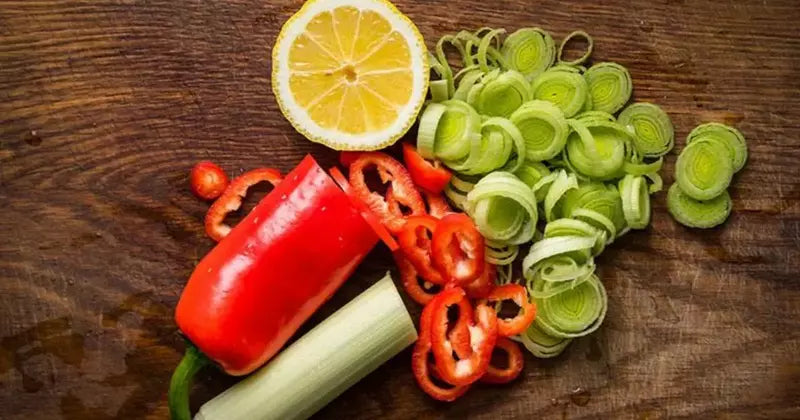We all love sweet foods – corn on the cob, peaches, figs, and brownies (or maybe it’s just me!). Too often we overindulge and load up on “healthy” sweet foods while dampening our taste buds’ ability to interpret what we are really feeding our bodies. There are five (not four) types of taste buds – salt, sweet, bitter, sour, and umami. Everything we put into our mouths give us some combination of these sensations. In America, we tend to have little to no bitter foods on our plate and an excess of sweet and salty foods. In addition, the foods we eat today are far less nutrient dense than what our ancestors consumed due to years of damaging farm practices and genetically modified engineering. It is only in response to our demand for sweeter food that these practices continue to flourish while the most nutritious foods get stepped over on our way to the cookie aisle.
In the new book, “Eating on the Wild Side”, author Jo Robinson talks about the origin of our fruits and vegetables and what little phytonutrients they contain compared to 400 years ago. Phytonutrients are the bitter, astringent-tasting compounds that help fight the leading chronic illness like cancer, diabetes, and heart disease. For example, wild dandelion leaves have eight times more antioxidant activity, two times more calcium, three times more Vitamin A, and five times more Vitamin E than spinach, our modern day “superfood”. So try adding some more “wild” foods to your plate like herbs, or substituting arugula for iceberg lettuce or sprinkle some scallions on your next soup or taco. The more you incorporate these foods into your diet, your taste buds will balance out and reset. (Want a quick way to reset your taste buds? Try a 21-day detoxification program! Speak to our physicians for more information.)
My three favorite tips from the book to increase your phytonutrient content naturally in your diet…
- Let your watermelon sit on your kitchen counter for a week before consuming to increase its lycopene content – an antioxidant reported to decrease prostate cancer incidence.
- Bake a potato, refrigerate overnight, then reheat & enjoy – less likely to spike your blood sugar!
- Cutting up your lettuce for a salad the next day can double its antioxidant qualities.
By the Way: What is Umami?
Umami, which means “delicious” or “savory” in Japanese, is the fifth commonly unknown taste bud that is actually L-glutamate (an amino acid). Why is this important? This is why we tend to crave foods like bacon, eggs, and mushrooms. It is really the ultimate comfort food. In Chinese medicine, umami cravings represent a yearning for comfort, peace, and stability. Unlike sugar cravings, once this taste is quenched you feel satisfied. What foods have umami flavor? Fish, cured meats, fermented products (i.e. kimchi, miso), eggplants, and green tea.
Start adding some bitter, wild foods to your diet today and leave a comment below with your favorite way to eat it!




